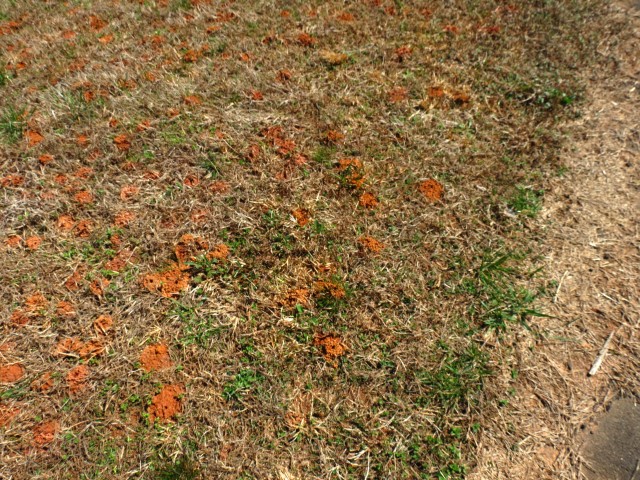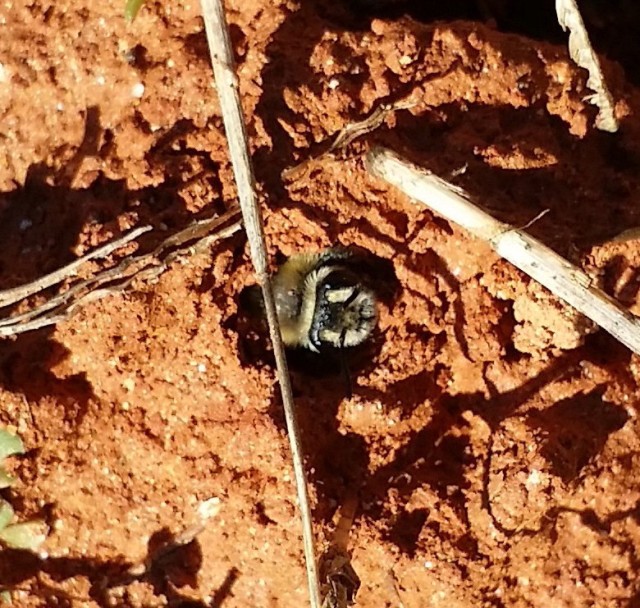Heritage Day at the B. W. Wells Rockcliff Farm is this coming Saturday, April 5th. The hundreds of visitors who park in the grassy lot and walk through the open field behind the Wells House will scarcely notice the enormous colonies of Andrena sp. Ground Bees that are directly under foot. The Ground Bee burrows either go unnoticed, or are mistaken for ant hills. Lacking bright colors, the bees themselves are obscure, and their weaving flight pattern, low to the ground, renders them faint and indistinct, looking a lot like flies. The bees also appear to completely ignore visitors, with stings being somewhere between extremely rare to never.
In spite of their undistinguished appearance, the Andrena sp. Ground Bees are vitally important pollinators of early spring wildflowers, shrubs and trees. One species, Andrena erigeniae, collects pollen almost exclusively from Spring Beauties (Claytonia virginica).
Even when the bees are at rest, their small size and dull colors make them difficult to spot.
The red clay of the burrow entrances stands out in the grass of an open field. There are many colonies of Ground Bees (also known as Mining Bees) scattered in open spaces throughout the Falls Lake area.
The burrow entrances can start out smooth, but as the bee extends its excavations, mounded soil begins to build up around the hole.
The Andrena are solitary bees, which seems contradictory when they live in such huge colonies, with burrows close together. But each female bee has a separate burrow, with a number of side chambers, where a wad of pollen and nectar is placed and a single egg is laid. When the larvae hatch, they feed on the nectar and pollen. Thus the bees’ life cycle is completely dependent upon the pollen collected from spring flowering plants.
The following photos illustrate a pollen-laden bee returning to the burrow, a bee just emerging from a burrow entrance, and bees mating.
Like some of the spring ephemeral wild flowers they pollinate, the Andrena sp. Ground Bee adults are active above ground for only about 2 months in the early spring.
Herb Amyx







